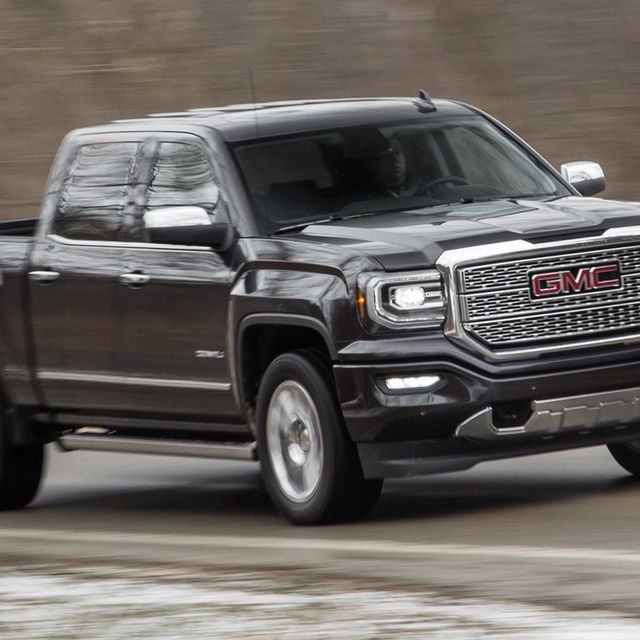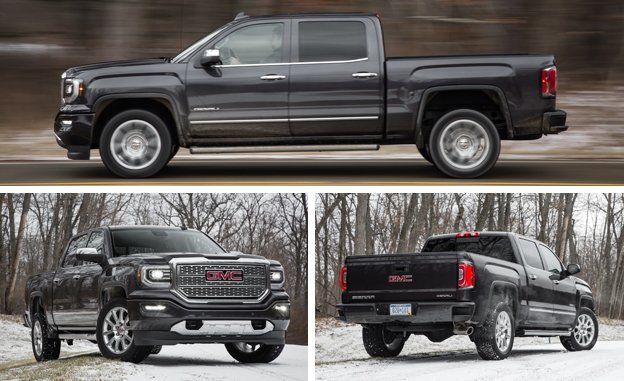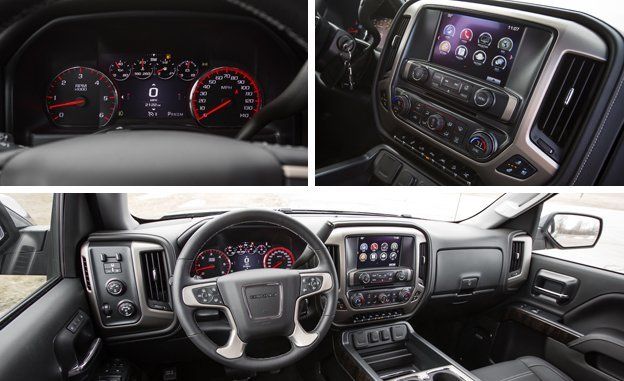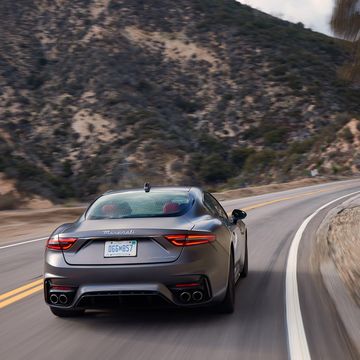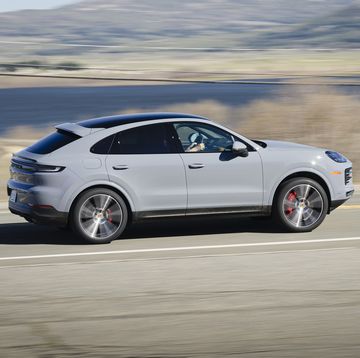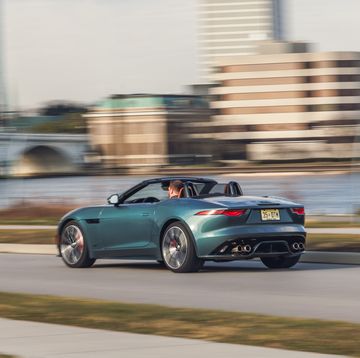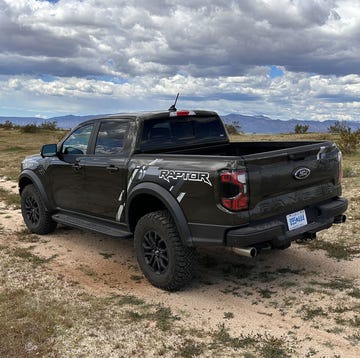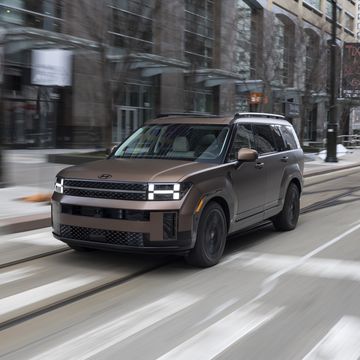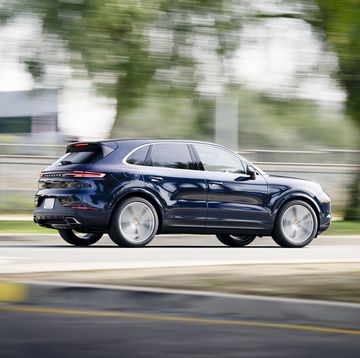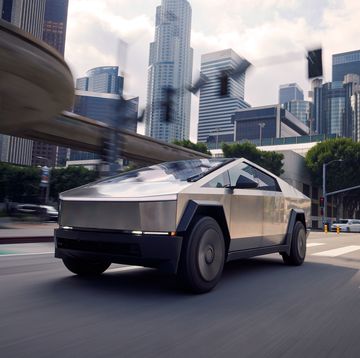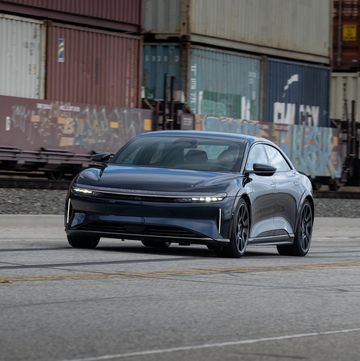The spread of General Motors’ eight-speed automatic transmission through the GMC Sierra 1500 lineup is nearly complete. Introduced to the Sierra in 2015 paired only with the biggest engine available, a 420-hp 6.2-liter V-8, the eight-speed has since become an option on certain Sierras equipped with the 5.3-liter V-8, tracing a path through the Sierra family similar to the same transmission’s injection into the Chevrolet Silverado lineup. Our first test of the GMC with the eight-speed comes in a 2016 Sierra 1500 Denali with the available 6.2-liter V-8, which sets up a neat comparison—we tested a nearly identical 2014 Sierra Denali 4x4 with the same engine and the old six-speed automatic two years ago.
Since adopting the eight-speed as its sole transmission partner for 2015, the 6.2-liter V-8 hasn’t changed—but the Sierra has, if only just. GMC administered an industry-standard mid-cycle refresh to the truck for 2016, updating the headlights and grille while adding Apple CarPlay and Android Auto phone-mirroring to its available touchscreen infotainment systems. The 2016 model year also marked the first expansion in availability of the eight-speed beyond the 6.2-liter, to SLT and Denali models with the 5.3-liter V-8. (The base 4.3-liter V-6 remains the only engine that hasn’t been bolted to the eight-speed, for now.) Otherwise, the Sierra experience is familiar, much the same as that of the 2015 and 2014 iterations.
So About That Eight-Speed Automatic . . .
The eight-speed is the same 8L90 unit used in the Corvette, albeit with a different casing for its traditional placement directly behind the engine. (In the Vette, the 8L90’s orientation is mounted in the rear, where it serves as a transaxle.) The connections to General Motors’ sports car don’t end there—as we’ve noted before, the fire-breathing 6.2-liter small-block V-8 is derived from the Corvette’s V-8 engine, although tuned to produce torque lower in the rev range for better towing and hauling performance.
The 6.2’s 420 horsepower shove the Sierra around with no problem. That loaded 2014 Sierra 1500 Denali 4x4 with the 6.2 and the six-speed automatic—again, almost identical to this truck, save for the gearbox—hit 60 mph in 5.4 seconds and tore through the quarter-mile in 14.1 seconds at 99 mph. Weighing just a smidge over 100 pounds heavier than that truck, this 2016 model and its eight-speed gearbox reached the same marks in 5.6 seconds and 14.0 seconds. We’d attribute part of its split performance to slight differences in shifting strategies between the six- and eight-speed transmissions and chalk up the rest to the extra weight. Either way, the 6.2-powered Sierra is a seriously quick beast, and the V-8 sounds fantastic at full throttle.
It’s so alluring that we spent much of our test goosing the Sierra from stoplights and generally driving the thing pretty hard. We couldn’t help ourselves. Even so, the truck averaged 15 mpg in our hands, or 1-mpg better than did the six-speed-equipped version. (The four-wheel-drive 6.2’s EPA estimates each nudged 1-mpg higher with the adoption of the eight-speed.) The shifting experience has smoothed relative to the old six-speed, too, the transmission quickly and unobtrusively shuffling through ratios to reach the highest one for fuel-economy reasons but also being quick to downshift when power for a quick pass is needed. At times we noticed it hunting for gears at a steady-state cruise around 40 mph, where it seems the computer couldn’t decide which gear was best for allowing the V-8’s cylinder-deactivation feature to shut down four cylinders. At higher speeds, we found no such issues.
Treasures of the Sierra
As mentioned, the rest of the Sierra remains the same as before. From a driving perspective this means accurate electrically assisted steering; a stiff, easily modulated brake pedal; and firm, well-controlled ride quality, although even with adaptive dampers, the Denali model’s ride can be jarring due to its large 20-inch wheels (and likely would be even more so with the optional 22s). Awash in leather, aluminum, and wood, the Denali’s interior is a rich environment, but all Sierras benefit from simple controls, clear instrumentation, and a handsome cabin design. Our sole interior complaint remains with the steering-wheel location, which is bizarrely offset toward the middle of the truck, meaning its hub points directly at the driver’s right nipple instead of the middle of their chest.
With an as-tested price of $61,140—par for the course at the upper end of the full-size truck market—our Denali-spec test truck started at $57,930 but came with the $2495 6.2-liter V-8, $995 sunroof, $550 Enhanced Driver Alert package (forward-collision warning, lane-keeping assist, automatic high-beams, vibrating “safety alert” driver’s seat), and $1665 worth of special paint, power bed-access steps, and a trailer-brake controller. However, one needn’t go full Denali for the eight-speed and 6.2L combo, which is available in the Sierra 1500 SLT model at a savings of nearly $7000. Besides the Denali, the SLT model also is the only way to unlock the eight-speed option with the 5.3-liter V-8. In any form, the Sierra remains a compelling full-size truck (even if it is basically the same as the Chevrolet Silverado), but it would be even better with the eight-speed automatic standard across the board. GMC, and its customers, have improved fuel economy and a silkier driving experience to gain.
Specifications

